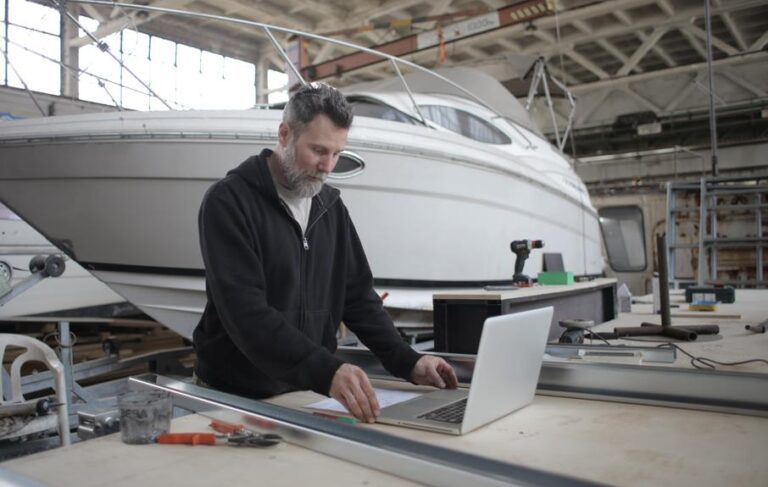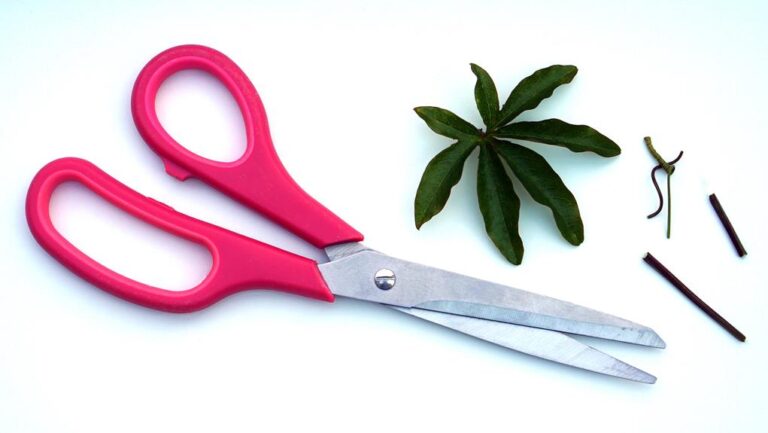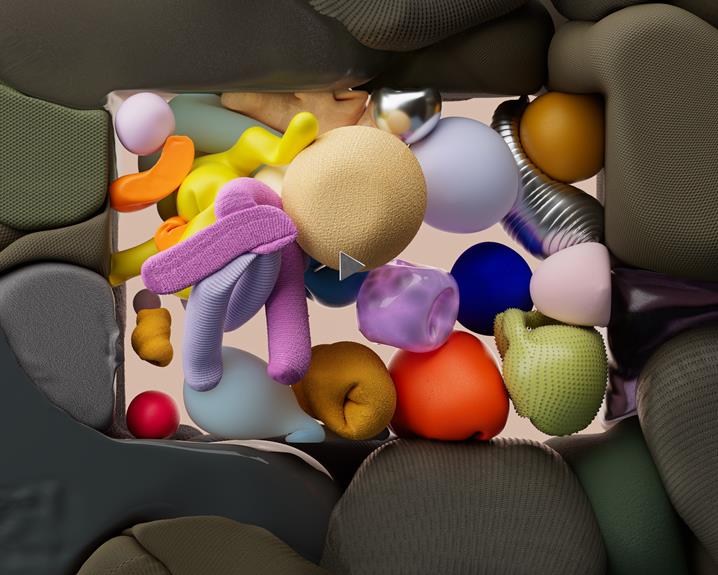FDM 3D Printers: A Beginner's Guide to Fused Deposition Modeling 3D Printing
Did you know that FDM 3D printing technology has revolutionized the world of manufacturing and prototyping? With its ability to create complex objects layer by layer, FDM 3D printers have become an indispensable tool for both professionals and hobbyists alike.
In this beginner's guide, we will explore the ins and outs of Fused Deposition Modeling, from choosing the right printer to mastering the art of successful printing.
Get ready to dive into the fascinating world of FDM 3D printing and unlock your creativity!
Understanding FDM 3D Printing Technology
One of the key aspects to grasp when delving into FDM 3D printing technology is the fundamental principles behind its operation. FDM, or fused deposition modeling, is a popular method of 3D printing that involves the use of thermoplastics to create three-dimensional objects layer by layer.
FDM printers work by melting a filament of thermoplastic material and depositing it onto a build platform, where it solidifies to form the desired shape. The process begins with a 3D model, which is sliced into thin layers using specialized software. These layers are then converted into instructions that the FDM printer can understand.
The printer's extruder heats the filament to its melting point and moves it along a predetermined path, depositing the molten material onto the build platform. As each layer is completed, the build platform moves down slightly to make room for the next layer. This process is repeated until the entire object is built.
FDM printing offers several advantages, including its ability to produce complex shapes with ease and precision. It is also a cost-effective and time-efficient method of 3D printing. However, it is important to choose the right FDM 3D printer for your needs to ensure optimal results and compatibility with your desired materials and applications.
Choosing the Right FDM 3D Printer for Your Needs
When selecting a suitable FDM 3D printer for your requirements, it is vital to consider both your specific needs and the range of available options. To help you make an informed decision, here are some key factors to consider:
- Build Volume: Determine the size of the objects you intend to print and choose a printer with a build volume that can accommodate your needs. Smaller printers are suitable for personal use, while larger ones are better for industrial applications.
- Printing Speed: Consider the speed at which the printer can produce objects. Faster printing speed is desirable for large-scale production, while slower speed allows for more precise and detailed prints.
- Material Compatibility: Different FDM 3D printers support different types of materials. Ensure that the printer you choose is compatible with the materials you plan to use, such as ABS or PLA.
- Connectivity Options: Look for printers that offer various connectivity options, such as USB, Wi-Fi, or Ethernet. This allows for convenient file transfer and remote monitoring.
- Cost: Consider your budget and weigh it against the features and capabilities of the printer. Keep in mind that higher-priced printers often offer better quality and additional features.
By carefully considering these factors, you can select an FDM 3D printer that aligns with your specific needs and maximizes your freedom in the world of 3D printing.
In the next section, we will explore the essential components of an FDM 3D printer.
Essential Components of an FDM 3D Printer
When it comes to the essential components of an FDM 3D printer, there are several key points to consider.
Firstly, understanding the different filament types and their compatibility with your printer is crucial for achieving optimal print quality.
Additionally, the proper leveling of the build plate ensures that the printed object adheres properly to the surface.
Lastly, the nozzle diameter options play a significant role in determining the level of detail and speed of the printing process.
These components work together to create a successful and efficient 3D printing experience.
Filament Types and Compatibility
The filament types and compatibility are essential components of an FDM 3D printer. When it comes to choosing the right filament for your printer, there are several options available. Here are two main subcategories of filament types:
- PLA (Polylactic Acid): PLA is one of the most commonly used filaments. It is biodegradable, easy to print with, and produces high-quality prints. PLA is compatible with most FDM 3D printers.
- ABS (Acrylonitrile Butadiene Styrene): ABS is a durable and impact-resistant filament. It is commonly used for functional parts and prototypes. However, ABS requires a heated bed and an enclosed printing environment to prevent warping.
Additionally, there are other filament types such as PETG, TPU, and Nylon, each with its own unique properties and applications. It is important to check the compatibility of the filament with your specific 3D printer model before printing to ensure optimal results.
Build Plate Leveling
Proper build plate leveling is an essential aspect of maintaining print quality and ensuring successful prints on an FDM 3D printer. The build plate, also known as the print bed, is the surface on which the object is printed. It needs to be perfectly level to ensure that the first layer of the print adheres properly and that subsequent layers are printed accurately.
To level the build plate, you need to adjust the height of each corner to ensure that it is parallel to the printer's nozzle. This can be done manually by turning the leveling screws or by using an automatic bed leveling system. Some 3D printers come with built-in leveling features that make this process easier.
Regularly checking and adjusting the build plate level is crucial, as any deviation can lead to print failures, warping, or poor adhesion. It is recommended to perform this calibration process before every print to guarantee optimal results.
Nozzle Diameter Options
Choosing the right nozzle diameter is a critical consideration for users of FDM 3D printers, as it directly impacts the print quality and speed of the printing process. Nozzle diameter options typically range from 0.2mm to 1.0mm, with smaller diameters producing finer details and larger diameters enabling faster printing speeds.
Here are the two sub-lists to help you understand the options available:
- Small Nozzle Diameters:
- Provides higher resolution and finer details in printed objects.
- Ideal for printing intricate models or objects that require a high level of precision.
- Large Nozzle Diameters:
- Allows for faster printing speeds, reducing the overall print time.
- Suitable for printing larger objects or prototypes that do not require fine details.
Getting Started With Fused Deposition Modeling
How can beginners familiarize themselves with the process of Fused Deposition Modeling (FDM) 3D printing?
FDM 3D printing is a popular form of additive manufacturing that uses a thermoplastic filament to create three-dimensional objects layer by layer. To get started with FDM 3D printing, beginners should first understand the basic components of the printer and how they work together. This includes the printer frame, the extruder, the heated build plate, and the control system.
Next, beginners should learn how to prepare a 3D model for printing using slicing software, which converts the model into printable layers. It is important to adjust the slicing settings based on the desired print quality and resolution. Once the model is prepared, it can be loaded onto the printer and the printing process can begin. Beginners should monitor the print progress and make any necessary adjustments to the printer settings as needed.
By following these steps, beginners can gain a solid foundation in FDM 3D printing and start creating their own objects.
Transition sentence: Now that beginners have a basic understanding of FDM 3D printing, let's explore some tips and tricks for successful printing.
Tips and Tricks for Successful FDM 3D Printing
With the right techniques and strategies, achieving successful FDM 3D printing results can be accomplished. To help you along the way, here are some tips and tricks that will improve your printing experience and increase the quality of your prints:
- Calibration
- Ensure that your printer is properly calibrated, including the bed leveling, extruder temperature, and filament flow rate.
- Regularly check and adjust these parameters to maintain optimal printing conditions.
- Material Selection
- Experiment with different materials to find the one that suits your needs.
- Each material has its own characteristics, such as strength, flexibility, and heat resistance.
- Consider the material's temperature requirements, as some may require higher extruder temperatures or heated beds for successful printing.
- Print Settings
- Pay attention to the layer height, print speed, and infill percentage.
- These settings can significantly affect the strength and appearance of your prints.
- Optimize the print settings based on the complexity and size of your model to achieve the desired results.
- Support Structures
- When printing complex or overhanging designs, utilize support structures to prevent sagging or collapsing during the printing process.
- Remove support structures carefully to avoid damaging the printed object.
Exploring the Materials Used in FDM 3D Printing
When it comes to FDM 3D printing, understanding material compatibility and limitations is crucial. Different materials have different properties, such as temperature resistance, flexibility, and strength, which can affect the printing process and the final printed object.
Choosing the right filament is essential to achieve the desired results, as there are various options available, including PLA, ABS, PETG, and more, each with its own advantages and disadvantages.
Material Compatibility and Limitations
One important consideration in FDM 3D printing is the wide range of materials available for use in the process. This allows for a great deal of freedom and flexibility when it comes to choosing the right material for a specific project. However, it is important to understand the compatibility and limitations of these materials to ensure successful prints.
- Compatible Materials:
- PLA (Polylactic Acid): A popular choice for beginners due to its ease of use and biodegradability.
- ABS (Acrylonitrile Butadiene Styrene): Known for its strength and durability, but requires a heated build plate for optimal results.
- Limitations:
- Temperature Sensitivity: Some materials, such as PETG, require a heated build plate and an enclosed print chamber to prevent warping.
- Material Properties: Not all materials have the same mechanical properties, so it's important to choose the right material for the desired application.
Choosing the Right Filament
A wide variety of filaments are available for FDM 3D printing, and selecting the appropriate one is crucial for achieving optimal results. Each filament material has its own unique properties, including strength, flexibility, heat resistance, and aesthetic qualities.
The most commonly used filament is PLA (polylactic acid), which is easy to print with and offers good strength and surface finish. ABS (acrylonitrile butadiene styrene) is another popular choice, known for its durability and impact resistance.
For functional parts that require high strength and heat resistance, materials like PETG (polyethylene terephthalate glycol) or nylon are recommended. Other filaments, such as TPU (thermoplastic polyurethane) and wood-filled PLA, offer specific characteristics like flexibility or a natural wood-like appearance.
It is important to consider the intended use of the printed object and its required properties when choosing the right filament for FDM 3D printing.
Overcoming Common Challenges in FDM 3D Printing
To successfully navigate the world of FDM 3D printing, it is essential for users to proactively address and overcome the common challenges that arise during the printing process. Here are some of the most common challenges and how to overcome them:
- Print adhesion issues:
- Ensure that the print bed is clean and level before starting a print.
- Use a suitable adhesive, such as glue stick or specialized bed adhesives, to improve print adhesion.
- Warping and curling:
- Optimize the print settings, such as adjusting the printing temperature and using a heated bed, to minimize warping.
- Use a brim or raft to provide additional support and prevent warping at the base of the print.
- Filament jams:
- Keep the filament dry and store it in airtight containers to prevent moisture absorption, which can lead to filament jams.
- Regularly clean the extruder nozzle to remove any clogs or debris that may cause filament jams.
By addressing these challenges, users can achieve better print quality and reduce the likelihood of failed prints.
In the next section, we will explore techniques for enhancing FDM prints with post-processing methods.
Enhancing Your FDM Prints With Post-Processing Techniques
To achieve optimal results, it is crucial to enhance the quality of your FDM prints through the utilization of various post-processing techniques. While FDM 3D printing offers many advantages, such as speed and affordability, the prints can sometimes lack the desired level of finish and smoothness. This is where post-processing techniques come into play.
One common technique is sanding, which involves using sandpaper or sanding blocks to smooth out the surface of the print. This helps to remove layer lines and create a more polished appearance. Additionally, sanding can also help in achieving a better fit and finish for functional parts.
Another technique is priming and painting. Applying a primer to the surface of the print helps to create a smoother and more uniform finish. This is especially useful when you want to achieve a specific color or texture. Once the primer is dry, you can then apply paint to further enhance the appearance of your print.
Other post-processing techniques include using acetone vapor smoothing for ABS prints, which involves exposing the print to acetone fumes to melt and smooth the surface. Additionally, you can also apply coatings or finishes, such as clear varnish or epoxy resin, to add a protective layer and improve the overall aesthetics of your print.
Expanding Your Skills in Fused Deposition Modeling
By continuously practicing and exploring new techniques, you can significantly enhance your skills in fused deposition modeling (FDM) and become proficient in creating complex and intricate 3D prints. Here are some ways to expand your skills in FDM:
- Experiment with Different Filaments: Try using different types of filaments, such as ABS, PLA, or PETG, to understand their unique properties and how they affect the final print. This will allow you to choose the most suitable filament for your specific projects.
- Optimize Printer Settings: Take the time to fine-tune your printer settings, including nozzle temperature, print speed, layer height, and infill density. By adjusting these parameters, you can achieve better print quality and minimize issues like stringing or warping.
- Learn Advanced Modeling Techniques: Familiarize yourself with advanced modeling techniques, such as using support structures, creating overhangs, or designing intricate details. This will enable you to take on more complex projects and push the boundaries of what you can create with FDM.
- Master Post-Processing Techniques: Explore various post-processing techniques to enhance the appearance and functionality of your prints. This may include sanding, priming, painting, or even applying special finishes like clear coats or metallic paints.
- Stay Updated with the Latest Developments: Keep yourself informed about the latest advancements in FDM technology and materials. This can be done by following online communities, attending workshops, or reading industry publications. By staying updated, you can continue to expand your knowledge and skills in FDM.
Frequently Asked Questions
How Long Does It Take to Print an Object Using an FDM 3D Printer?
The time it takes to print an object using an FDM 3D printer varies depending on factors such as the size, complexity, and resolution of the object. Generally, smaller objects can take a few hours, while larger and more intricate ones can take several days.
Can I Use Any Type of Filament With an FDM 3D Printer?
Yes, you can use a variety of filaments with an FDM 3D printer. These include ABS, PLA, PETG, and more. However, it is important to ensure that the filament is compatible with your specific printer model.
What Is the Maximum Size of an Object That Can Be Printed With an FDM 3D Printer?
The maximum size of an object that can be printed with an FDM 3D printer depends on the size of the printer's build volume. Different printers have different build volumes, so it is important to check the specifications of the specific printer in question.
Can I Pause and Resume a Print Job on an FDM 3D Printer?
Yes, it is possible to pause and resume a print job on an FDM 3D printer. This feature allows users to temporarily halt the printing process and then continue from where it was paused, providing flexibility and control over the printing process.
Are There Any Safety Precautions I Should Take When Using an FDM 3D Printer?
When using an FDM 3D printer, it is important to adhere to safety precautions. These include wearing protective gear, ensuring proper ventilation, keeping children and pets away, and being cautious with hot components and moving parts.
Conclusion
In conclusion, Fused Deposition Modeling (FDM) 3D printing is a versatile and accessible technology that allows users to create three-dimensional objects with precision and ease.
By understanding the essential components of an FDM printer and following tips and tricks for successful printing, users can overcome common challenges and enhance their prints with post-processing techniques.
An interesting statistic to evoke emotion is that FDM 3D printing has been shown to reduce waste by up to 90%, making it an environmentally friendly choice for manufacturing and prototyping.








